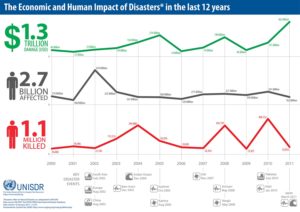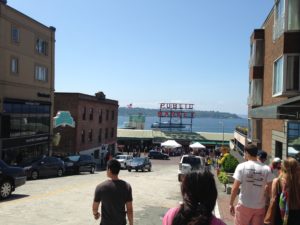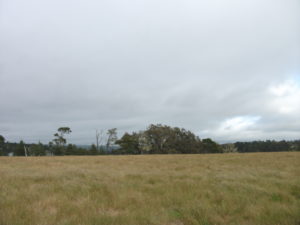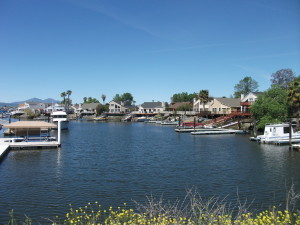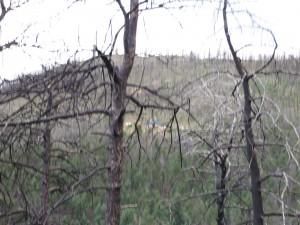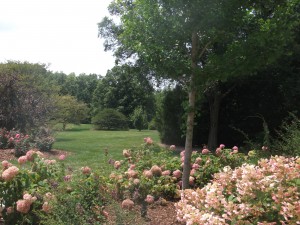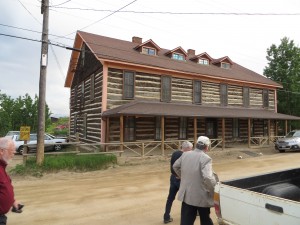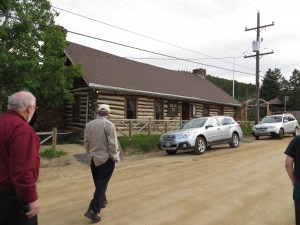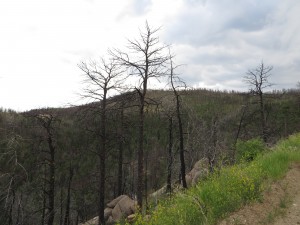Amid all the necessary attention to current disasters, small community conferences across the country are steadily training and educating local government staff, emergency volunteers, and local stakeholders in hazard-related issues to become more resilient. Because hazards vary widely with geography and climate, the specific focus of these meetings varies widely as well. The quiet but important fact is that they are happening, and people are learning. This is one particularly salient reason why, in my new post-APA career, I have made myself available as a public speaker. These conferences provide an excellent opportunity to feel the pulse of America regarding hazard mitigation and disaster recovery.
All is far from perfect, as one might expect, but the progress can be encouraging. My latest presentation was on December 6 in Salt Lake City, at the Resilient Salt Lake County Conference in the Salt Palace Convention Center. About 240 people had registered, I was told, for this one-day event.
While, for many people outside Utah, the word “Mormon” comes to mind quickly in connection with the state, one important fact to know is that the Church of Jesus Christ of Latter-Day Saints (LDS) is itself active in encouraging members, congregations, and communities to become more resilient and aware of the disaster threats around them. One interesting feature of the conference was that it focused as much on individual attitudes and resilience as it did on community planning. Given my background, I tend to focus on the latter as a public speaker, but I do not underestimate the value of personal emotions and outlook in handling stressful situations. In fact, for me, the most valuable takeaways from my visit dealt with those issues, even though many people attending may have felt the opposite after listening to me. Sometimes, the issue is simply what you need to learn at a given moment. But communities are composed of individuals, and whole-community resilience depends on the sum of its parts.
 My own after-lunch presentation certainly started with a personal element, as I walked people through what I called “an emotional journey” through Sri Lanka and New Orleans in 2005, and events beyond, to regain a human perspective on why our community-level planning for hazard mitigation and disaster recovery remains important. I then highlighted many of the tools we had developed during my tenure at the American Planning Association to advance such planning, and concluded with a primer on the most practical aspects of adaptation for climate change. But I want to focus instead on what others said that I found important.
My own after-lunch presentation certainly started with a personal element, as I walked people through what I called “an emotional journey” through Sri Lanka and New Orleans in 2005, and events beyond, to regain a human perspective on why our community-level planning for hazard mitigation and disaster recovery remains important. I then highlighted many of the tools we had developed during my tenure at the American Planning Association to advance such planning, and concluded with a primer on the most practical aspects of adaptation for climate change. But I want to focus instead on what others said that I found important.
Utah’s Threatscape
First, I might note that a presentation early in the day by Matt Beaudry, from the Utah Division of Emergency Management, provided an effective handle on the state’s approach to resilience, which seems to involve a serious effort to take a holistic approach. Beaudry used the term “threatscape,” not one I have heard much before, to talk about the comprehensive array of hazards facing Utah communities. This threatscape, he noted, is “evolving daily,’ and that we are “planning daily for things unimaginable 10 or 20 years ago.” Most of these new threats are not natural but involve the critical infrastructure we have built in our communities and include cybercrime as well as active violence such as vehicle rammings.
Nonetheless, the natural hazards remain. Utah has fault zones and is subject to seismic disturbances, but are communities prepared for earthquakes? It is easy enough to understand when the wildfire season starts, but earthquakes provide no warning. The best preparation is seismically resistant construction, but what about older buildings? Beaudry discussed numerous acronym-laden state programs to address these needs, many of which can be found on the Utah Department of Public Safety website, but one was refreshingly non-acronymic and easy to understand—“Fix the Bricks,” a Salt Lake City program offering grants for seismic retrofitting of older buildings.
Utah has also experienced floods, wildfires, and landslides. Beaudry noted that catastrophic disruptions to water supplies threaten life itself. Hospitals cannot stay open without water. What happens when that lifeline is cut off?
Michael Barrett, resilience program manager for Salt Lake County Emergency Services, followed up by noting that Salt Lake County wants “to ensure that all plans include resilience.”
The ComeBACK Formula
 The last morning speaker, Sandra Millers Younger, whom I had never met before this trip, provided the most powerful perspective of the day on individual resilience. Her story began from personal experience, which is not surprising, nor is the fact that she converted that personal experience into a book, The Fire Outside My Window. That fire, the largest in modern California history and known as the Cedar Fire, consumed 280,000 acres near San Diego in 2003.
The last morning speaker, Sandra Millers Younger, whom I had never met before this trip, provided the most powerful perspective of the day on individual resilience. Her story began from personal experience, which is not surprising, nor is the fact that she converted that personal experience into a book, The Fire Outside My Window. That fire, the largest in modern California history and known as the Cedar Fire, consumed 280,000 acres near San Diego in 2003.
It also destroyed the house she and her husband had built on a hill they called Terra Nova, which, she says, afforded lofty views “all the way to Mexico.” I must confess that I might have hesitated to build in that location, but what matters for her story is what happened after she awoke to see fire outside, “grabbed our pets and belongings,” including many of her photographer husband’s images, and jammed everything into an Acura Coupe. They headed downhill along a steep route, lost visibility amid the smoke, and feared going off the road and over a cliff until a bobcat leaped in front of her headlights. She followed the bobcat into the smoke to safety. But twelve neighbors died. It was Younger’s struggle with the aftermath that ultimately yielded her story and her approach, which she now calls the ComeBACK formula. At the core of that approach is a quote she uses from Victor Frankl, a Holocaust survivor who wrote a highly regarded book, Man’s Search for Meaning, in which he writes, “Everything can be taken from a man but one thing: the last of the human freedoms—to choose one’s attitude in any given set of circumstances, to choose one’s own way.”
That underlay the simple statement that, confronted with crisis or disaster, we can choose to be victims or survivors. Younger noted that a current subset of psychological research deals with “post-traumatic growth,” ways in which we grow our personal resilience as a result of our experience with disaster. This is not to gainsay the reality of post-traumatic stress, which has gained far more attention, but to acknowledge that we do have choices about the ways in which we respond. To give reality to her approach, Younger stepped the audience through an exercise, pairing up at their tables to share answers to questions based on her approach.
Younger’s five points in the ComeBACK Formula are straightforward enough, but not always easy for people to internalize:
- Come to a place of gratitude.
- Be patient; believe you can.
- Accept help; be tough enough to ask.
- Choose your story.
- Keep moving forward.
I found it interesting that a female speaker and counselor would use the phrase, “be tough enough to ask,” in reference to accepting help from others. As a man, I wonder how many men would even think of framing the question of accepting help in those terms; yet it feels instinctively true. Asking for help, especially when you are a professional helper, means having the courage to expose your own vulnerability, but also your willingness to learn and grow by doing so. As she notes, it is “hard to call 911 when you are 911.” On the other hand, it is hard to be a hero without understanding what it means to be rescued. To become a better giver, learn how to receive.
The Extreme Example
All this may well have set the stage for the closing keynote, 93-year-old Edgar Harrell, a World War II Marine Corps veteran who survived the sinking of the USS Indianapolis on July 30, 1945, as it was returning to the Philippines from Guam. A lurking Japanese submarine had spotted the ship and launched six torpedoes, two of which struck and literally cut the vessel in half.
Unbeknownst to its crew, the ship had delivered to Tinian Island the atomic bomb that destroyed Hiroshima a few days later. Most of the crew, 880 men, perished while a shrinking contingent that included Harrell, then 21, struggled in tropical seas for five days to survive without food and drinkable water. Finally, a U.S. airplane spotted them, and a seaplane rescue was underway. Here was an example in which the only route to survival was to accept help because no one would have lived otherwise. Harrell lived and retold his story in Out of the Depths.
Younger had earlier noted that she met a man who had lost only his garage in the wildfire, yet was bitter about the outcome, while others who had lost relatives or suffered grievous burns had far more positive attitudes about the future. When any of us think we have seen the worst, it is these stories that remind us of the truth of Victor Frankl’s observation. We do indeed choose how to respond.
Jim Schwab

